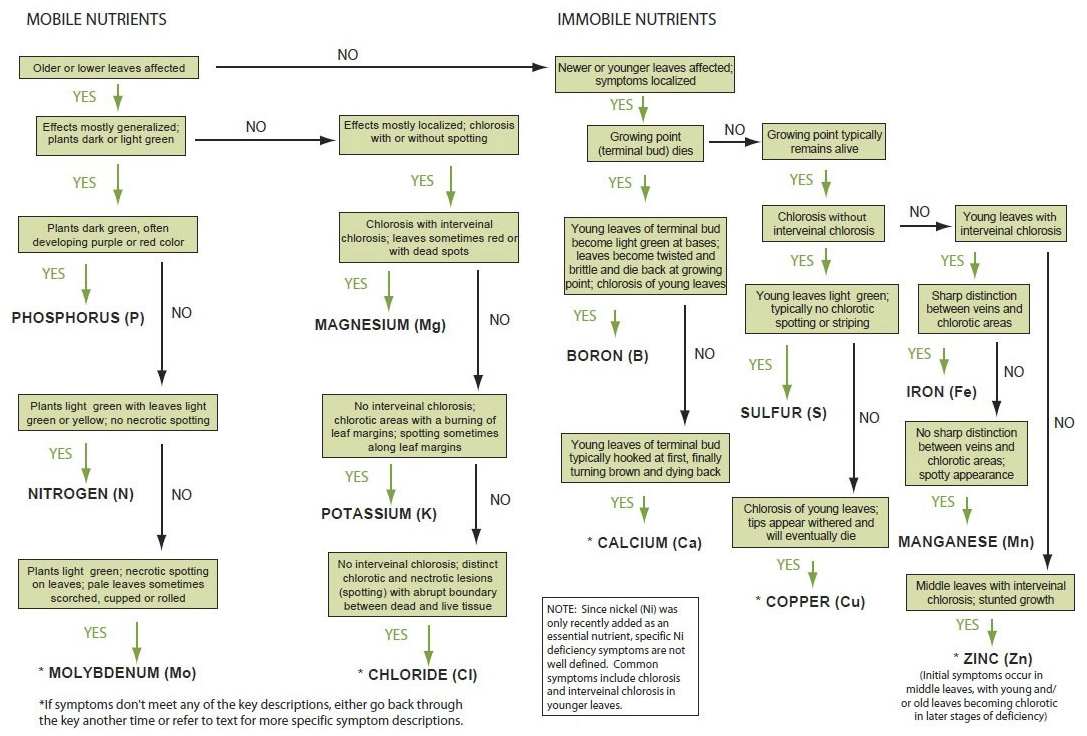Striking a Balance
Knowing what makes crops emerge, grow and flourish is one thing; finding the right balance is a whole other story! In this post, the first in our series on the relationship between nutrients, we take a look at what happens when an over-abundance of one element causes a deficiency of another.
Plants require a total of 16 elements to grow, develop, reproduce and remain healthy. These essential elements are categorized as macro- (NPKS), secondary- (Ca, Mg) and micro-nutrients (B, Zn, Cu, Mn, Fe, Cl, Mo). In addition, plants accumulate additional elements such as sodium (Na), silicon (Si), cobalt (Co), nickel (Ni), iodine (I) and selenium (Se).
Based on their mobility in the soil or the plant, each of these nutrients can become deficient; hindering the yield potential and/or health of the crop. Although mobile nutrients can be re-translocated within the plant, immobile nutrients cannot.
Balancing nutrients to grow a good crop is a challenging task. One rule of thumb, though, is “too much of a good thing can turn into a bad thing.” For example, over-application of nitrogen, calcium or magnesium can cause potassium deficiency, while excess use of chloride can decrease nitrogen and sulfur efficiency, leading to chlorosis and a reduction of photosynthesis.
Here are some more negative interactions between essential nutrients to avoid.
| Over application of: | Can cause deficiency of: |
|---|---|
| Nitrogen, calcium, magnesium, sodium | Potassium |
| Potassium and/or calcium | Magnesium |
| Chloride | Nitrogen |
| Chloride | Sulfur |
| Magnesium, potassium | Calcium |
| Calcium | Boron |
| Nitrogen, phosphorus, manganese, molybdenum, nickel, zinc, bicarbonate | Iron |
| Phosphorus, iron | Manganese |
| Phosphorus, molybdenum | Copper |
| Phosphorus | Zinc |
Reading Signs of Deficiency
Knowing how to read the signs of deficiency can help you make an early diagnosis or prevent its occurrence. And, being able to diagnose nutrient deficiencies early can make the difference between harvesting a good crop and leaving your profit on the ground.
Be sure to scout your crop at various growth stages, looking for signs of deficiencies, and keep an eye out for competitive weeds in the field, which may be sequestering key nutrients from the root zone, preventing crops from accessing them.
Here’s a handy chart to help you identify some common signs of nutrient deficiency in the field:

Flowchart to help you identify some common signs of nutrient deficiency in the field. (Click to open in a new window)
Striking a Balance
To proactively avoid nutrient shortages and excesses, fertilize your crop according to the results of a soil test and with an attainable yield goal in mind. Consider using a Primer and Starter to provide continuous feeding at seeding, and a Foliar in-crop throughout the season to complement the upfront application of nutrients.
OMEX offers a wide range of seed-applied Primers, in-furrow Starters and in-crop Foliars, along with other specialty products, to provide balanced plant nutrition during ideal and less than ideal conditions. Call your OMEX representative for a guided nutrient management strategy, tailored to the specific needs of your crops.
For more information on detecting and correcting deficiencies, please read Nutrient Deficiency – Symptoms and Solutions.
